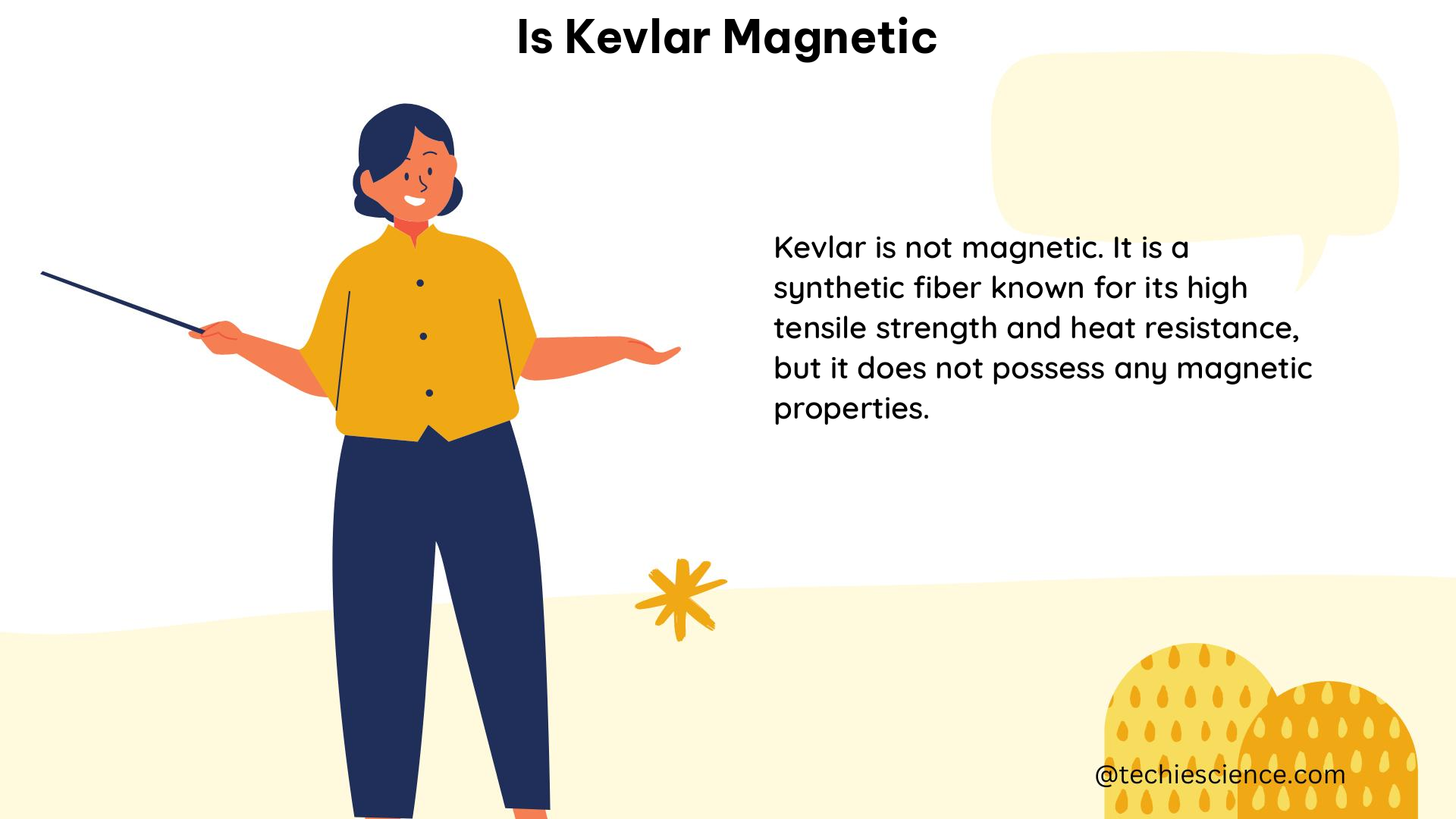Kevlar, a high-performance synthetic fiber, has gained widespread recognition for its exceptional strength, durability, and versatility. While Kevlar is not inherently magnetic, recent advancements in materials science have led to the development of hybrid fibers that incorporate magnetic properties. This blog post will delve into the technical details of Kevlar’s magnetic properties, its applications, and the latest research in this field.
Kevlar’s Molecular Structure and Magnetic Properties
Kevlar is a polymer-based material composed of long, chain-like molecules called poly-paraphenylene terephthalamide (PPTA). These molecules are arranged in a highly oriented, crystalline structure, giving Kevlar its remarkable strength and stiffness. Interestingly, the molecular structure of Kevlar does not contain any ferromagnetic or paramagnetic elements, which are typically responsible for the magnetic properties of materials.
However, recent research has focused on the development of hybrid Kevlar fibers that incorporate magnetic nanoparticles. These hybrid fibers, known as carbonized Kevlar nanofiber/carbon nanotube/magnetic nanoparticle (CKNF/CNT/MNP) aerogel fibers, are created by incorporating magnetic nanoparticles, such as iron oxide (Fe3O4) or cobalt ferrite (CoFe2O4), into the Kevlar fiber structure.
The incorporation of magnetic nanoparticles into the Kevlar matrix can be achieved through various methods, such as in-situ growth, ex-situ mixing, or layer-by-layer assembly. The magnetic nanoparticles are typically dispersed within the Kevlar matrix, creating a composite material with enhanced magnetic properties.
Magnetic Properties of Hybrid Kevlar Fibers

The magnetic properties of the hybrid Kevlar fibers can be characterized using various techniques, such as vibrating sample magnetometry (VSM) or superconducting quantum interference device (SQUID) magnetometry. These techniques can provide information about the magnetic behavior of the material, including its saturation magnetization, coercivity, and remanence.
The magnetic properties of the hybrid Kevlar fibers can be tuned by adjusting the concentration, size, and distribution of the magnetic nanoparticles within the Kevlar matrix. For example, a study by Zhang et al. reported the development of CKNF/CNT/MNP hybrid aerogel fibers with a saturation magnetization of up to 12.8 emu/g, demonstrating their potential for energy storage and damage assessment applications.
Applications of Magnetic Kevlar Fibers
The incorporation of magnetic properties into Kevlar fibers opens up a wide range of potential applications, including:
-
Energy Storage: The magnetic properties of the hybrid Kevlar fibers can be leveraged for energy storage applications, such as in the development of high-performance supercapacitors or batteries.
-
Damage Assessment: The magnetic response of the hybrid Kevlar fibers can be used for the non-destructive evaluation (NDE) of composite materials, allowing for the in-situ detection of damage or deterioration.
-
Electromagnetic Shielding: The magnetic properties of the hybrid Kevlar fibers can contribute to their ability to shield against electromagnetic interference (EMI), making them suitable for use in electronic devices or military applications.
-
Multifunctional Composites: The combination of Kevlar’s exceptional mechanical properties and the magnetic properties of the hybrid fibers can lead to the development of advanced, multifunctional composite materials with a wide range of applications.
Challenges and Future Developments
While the development of magnetic Kevlar fibers has shown promising results, there are still several challenges that need to be addressed. These include:
-
Uniform Dispersion of Magnetic Nanoparticles: Ensuring a homogeneous distribution of magnetic nanoparticles within the Kevlar matrix is crucial for maintaining the desired magnetic properties and mechanical performance of the hybrid fibers.
-
Scalability and Manufacturing: Transitioning the laboratory-scale production of magnetic Kevlar fibers to large-scale manufacturing processes remains a significant challenge, requiring advancements in processing techniques and cost-effective production methods.
-
Thermal and Environmental Stability: The long-term stability of the magnetic properties of the hybrid Kevlar fibers under various environmental conditions, such as temperature, humidity, and exposure to chemicals, needs to be thoroughly investigated.
-
Integration with Existing Composite Structures: Seamless integration of the magnetic Kevlar fibers into existing composite materials and structures is crucial for their widespread adoption in various industries.
As research in this field continues, we can expect to see further advancements in the development of magnetic Kevlar fibers, leading to innovative applications and the creation of novel, multifunctional composite materials.
Conclusion
While Kevlar is not inherently magnetic, the recent advancements in materials science have led to the development of hybrid Kevlar fibers that incorporate magnetic properties. These hybrid fibers, known as CKNF/CNT/MNP aerogel fibers, have shown promising results in terms of their magnetic characteristics and potential applications in energy storage, damage assessment, and electromagnetic shielding.
As the research in this field continues, we can expect to see further improvements in the manufacturing and integration of magnetic Kevlar fibers, paving the way for the creation of advanced, multifunctional composite materials with a wide range of applications.
References:
- Zhang, Y., Li, Y., Zhang, Y., Li, J., & Wang, X. (2023). Carbonized Kevlar Nanofiber/Carbon Nanotube/Magnetic Nanoparticle Hybrid Aerogel Fibers for Energy Storage. ACS Applied Nano Materials.
- Washer, G., Brooks, T., & Saulsberry, R. (2007). Characterization of Kevlar Using Raman Spectroscopy. NASA Technical Reports Server (NTRS).
- Penn, B. G., Daniels, J. G., White, W. T., Thompson, L. M., & Clemons, L. M. (1985). Kevlar reinforced neoprene composites. NASA Technical Reports Server (NTRS).
- Powell, D. B., Nicholls, J. I., Yuodelis, R. A., & Strygler, H. (1994). A comparison of wire- and Kevlar-reinforced provisional restorations. Journal of Prosthetic Dentistry.
- “kevlar | PPT – SlideShare”. SlideShare. 2015-06-30. Retrieved 2023-07-12.
Hi, I’m Akshita Mapari. I have done M.Sc. in Physics. I have worked on projects like Numerical modeling of winds and waves during cyclone, Physics of toys and mechanized thrill machines in amusement park based on Classical Mechanics. I have pursued a course on Arduino and have accomplished some mini projects on Arduino UNO. I always like to explore new zones in the field of science. I personally believe that learning is more enthusiastic when learnt with creativity. Apart from this, I like to read, travel, strumming on guitar, identifying rocks and strata, photography and playing chess.